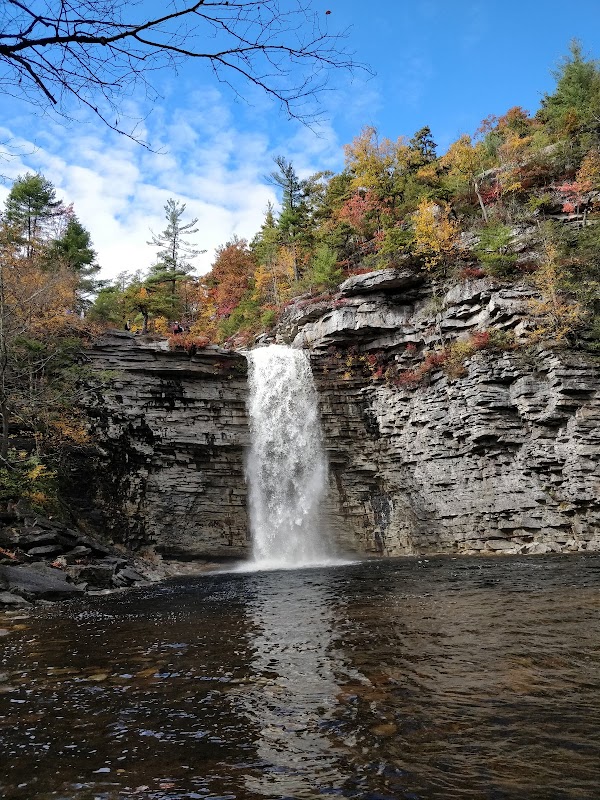
Fall Birding Festival in Lewisboro, New York: An Adventurer’s Guide to Wings and Woods
Experience the Fall Birding Festival in Lewisboro, New York, where crisp autumn air meets the spirited call of migrating birds. Designed for both casual hikers and seasoned birders, this event offers accessible trails, expert-led hikes, and practical tips to ensure you’re ready for an engaging outdoor adventure.
Bring Binoculars and a Field Guide
High-quality binoculars and a regional bird identification book will enhance your observations during hikes and workshops.
Dress in Layers for Early Mornings
Temperatures start cool and can warm quickly; layering allows you to adjust as needed without overheating or catching chills.
Wear Waterproof Footwear
Some trails pass through wet areas and muddy patches, making waterproof boots necessary for comfort and safety.
Carry Water and Snacks
Plan for at least two liters of water and portable snacks, since facilities near trails are limited during festival activities.
Fall Birding Festival in Lewisboro, New York: An Adventurer’s Guide to Wings and Woods
The Fall Birding Festival in Lewisboro, New York, offers a purposeful adventure for birdwatchers and nature lovers ready to engage with autumn’s crisp breath and feathered inhabitants. This event takes place across several forested trails and wetlands, including the vast Cranberry Lake Preserve, where gentle elevation changes invite hikers of all levels to step into a landscape bustling with migrating songbirds and raptors. Expect trails with mixed terrain—dirt paths, occasional rocky stretches, and wooden boardwalks through marshy areas—that cover distances from 2 to 5 miles per guided walk.
The early mornings crack open with the rustle of leaves and the sharp calls of warblers attempting their last chorus before winter. Lakes shimmer, daring you closer, reflecting the dance of vultures and hawks wheeling overhead. Whether you’re carrying binoculars or simply tuning in to the layers of sound, the festival balances the thrill of discovery with practical guidance, including expert-led hikes, identification workshops, and hands-on demonstrations of bird banding.
Preparation is key for a comfortable and rewarding experience. Hydration matters—pack at least two liters of water, since opportunities to refill may be sparse. Footwear should manage damp conditions and uneven terrain: waterproof hiking boots with good traction are your best allies. Timing your visits for early in the morning heightens your chances of seeing active birds and also avoids the warmer midday heat that slows feathered movement.
The festival encourages respect for the natural rhythm of the environment. Bird species move with fierce independence, not waiting for the observer’s schedule but responding to air currents, food availability, and seasonal shifts. This engagement prompts an alert attentiveness, where patience reveals a chestnut-sided warbler flitting just beyond the oaks or an osprey stooping for a catch in the lake. The earth beneath your feet and the water pushing quietly nearby demand awareness; invasive plants and fragile habitats require non-intrusive passage.
Beyond the walks, local experts share knowledge on the history of bird habitats in Westchester County and ongoing conservation efforts. The festival colors the weekend with practical learning alongside the vivid thrill of wildlife encounters. From the tune of a chickadee on a frozen branch to the patient glance of a migrating heron, Fall Birding Festival stitches together an immersive outdoor adventure grounded in discovery, respect, and preparation.
Nearby Trips
All Adventures
Boat Charters
Water Activities
Adventures near Lewisboro, New York
Discover the unique and memorable adventures that make Lewisboro, New York special.
Frequently Asked Questions
What types of birds are most commonly seen during the Fall Birding Festival?
The festival highlights migratory species like warblers, vireos, and thrushes, plus raptors such as hawks and ospreys. Waterfowl frequent Cranberry Lake Preserve, making sightings of ducks and herons common.
Are the trails accessible for beginners or families with children?
Yes, many trails are suitable for beginners and families, with flat boardwalks through wetlands and shorter loops around the preserve. Guided walks offer slower paces and educational interaction.
Is prior birding experience necessary to attend the festival?
No prior experience is needed. Festival guides offer workshops on bird identification, and participants can learn at their own pace with plenty of expert support.
What is the best time of day to go birdwatching at the festival?
Early morning from sunrise to mid-morning is most active for bird activity, when birds sing, feed, and migrate.
Are pets allowed on the trails during the festival?
Pets are typically discouraged to avoid disturbing wildlife habitats and nesting birds. Check festival regulations for specific trail policies.
How do festival organizers support local conservation efforts?
Proceeds often aid local habitat restoration projects. The festival also raises awareness about invasive plants, pollution risks, and habitat preservation through its programming.
Recommended Gear
Waterproof Hiking Boots
Protects feet from wet and rocky terrain common on the birding trails.
Binoculars
Essential for spotting and identifying birds at a distance.
Layered Clothing
Adjusts easily to fluctuating temperatures during the day.
Hydration Pack or Water Bottles
Maintains hydration during long walks where water sources are limited.
Local Insights
Hidden Gems
- "The overlook near Cranberry Lake offers quiet views seldom crowded, perfect for spotting osprey."
- "A small wetland patch along Meadow Road hosts migrating ducks and provides great photo opportunities."
Wildlife
- "Look for the elusive wood thrush whose haunting calls fill the forest understory."
- "Midday brings out monarch butterflies feeding on remaining asters."
History
"Lewisboro’s varied habitats have long served as corridors for bird migration, with conservation efforts dating back several decades focused on protecting these vital stopovers."
